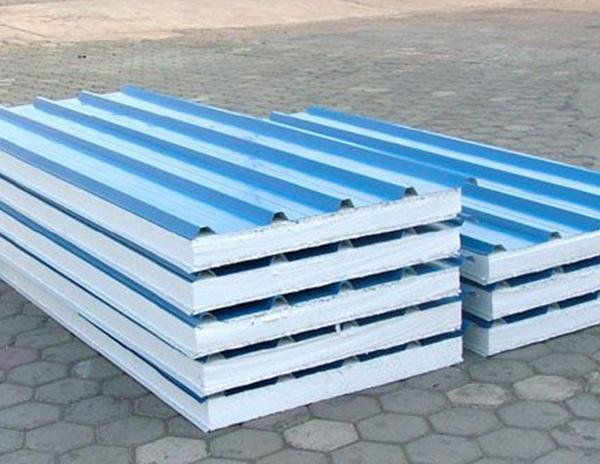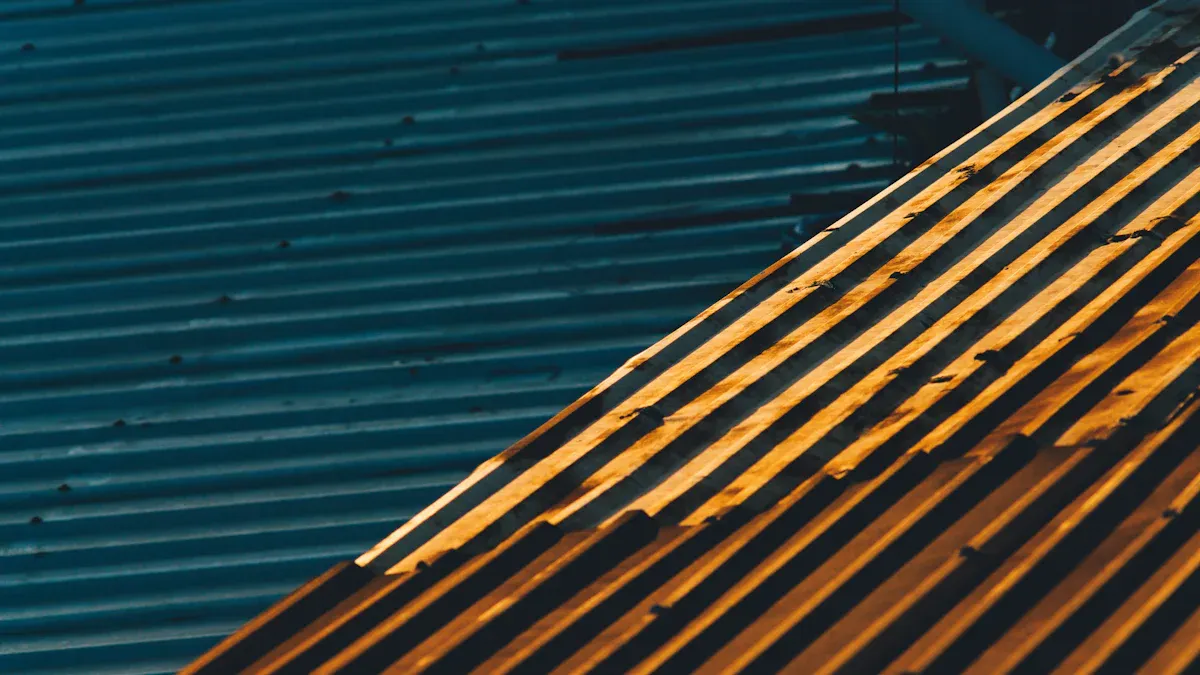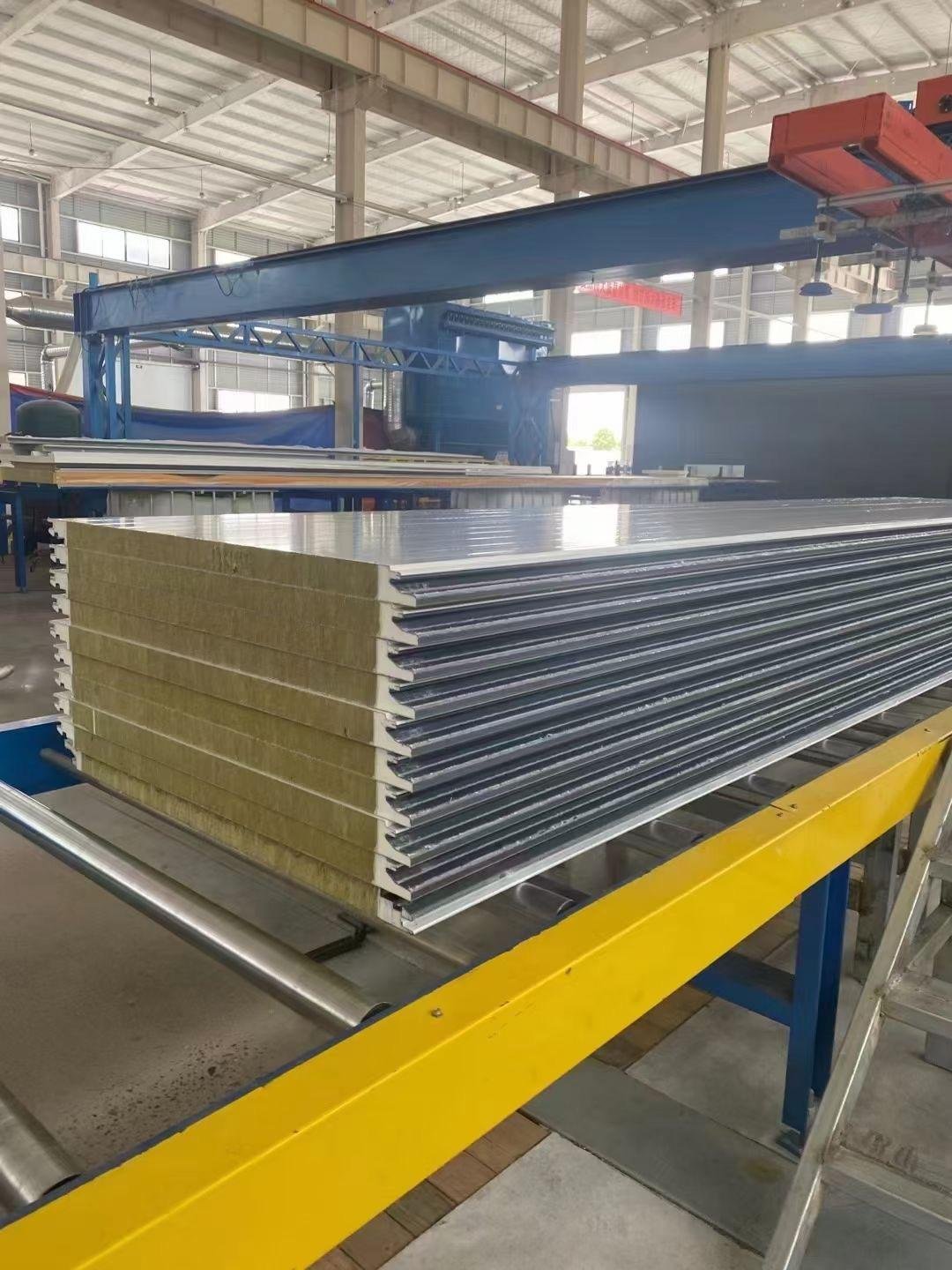
Comparing EPS and PU Sandwich Panels

Explore the key differences between EPS and PU panels.
Features | EPS Sandwich Panel | PU Sandwich Panel |
|---|---|---|
Thermal Insulation | Moderate energy efficiency. | Superior heat retention. |
Fire Resistance | Burns easily, high risk. | Better resistance, low hazard. |
Durability | Light but less tough. | Stronger, lasts longer. |
Cost | Lower initial cost. | Higher upfront, saves energy. |
Environmental Impact | Moderate recyclability. | Highly recyclable, eco-friendly. |
Applications | Good for general use. | Ideal for cold storage. |
When looking at EPS and PU panels, it’s essential to understand the key differences between them. These include how they insulate heat, resist fire, and their longevity. Recognizing these differences can help you select the best option for your project. For instance, tests indicate that PU panels catch fire faster and produce thicker, more harmful smoke than other materials. This highlights the importance of fire safety when choosing a panel. Being aware of these key differences will assist you in determining what works best for your needs.
Key Takeaways
EPS panels are light and cheap, great for saving money.
PU panels keep heat in and resist fire, perfect for safety.
Think about what your project needs, like warmth or fire safety, before picking EPS or PU panels.
Both panels are good for the planet, but PU panels are easier to recycle.
Check local building rules to make sure your panels are safe and good quality.
EPS Sandwich Panel

Characteristics
EPS (Expanded Polystyrene) sandwich panels are light, strong, and flexible materials used in building projects. These panels have a core made of EPS foam placed between two protective layers, like steel or aluminum. The foam core keeps heat in or out, while the outer layers make the panel sturdy and long-lasting.
EPS panels are very lightweight, with densities between 800-2000 kg/m³. They are also very strong, being up to eight times tougher than some older materials. Their ability to stop heat transfer is much better, making them a smart choice for saving energy.
Advantages
EPS sandwich panels have many benefits that make them widely used in different fields:
Energy Efficiency: These panels can achieve U-values as low as 0.18 W/m²K. This is much better than concrete blocks, which range from 1.0-1.5 W/m²K. They are great for meeting global energy-saving rules like the EU’s Energy Performance of Buildings Directive.
Cost-Effectiveness: EPS panels help save money by cutting labor costs and reducing wasted materials. Prefabricated designs add to the savings.
Ease of Installation: Their light weight makes them easy to move and install, speeding up construction work.
Versatility: These panels work well in factories, warehouses, and construction sites. They allow faster building and reduce mistakes during projects.
Application Area | Benefits |
|---|---|
Industrial | Quicker building, saves money |
Manufacturing | Prefab design cuts waste and errors |
Construction | Easy to install, lowers labor costs |
Disadvantages
Although EPS sandwich panels are great in many ways, they have some downsides:
Fire Resistance: EPS cores can melt when exposed to fire, which may cause the fire to spread. At temperatures above 250°C, the panels might fall apart, raising safety concerns.
Insurance Challenges: Panels with flammable cores have caused big fire losses in industries. Because of this, insurers often see them as risky, leading to higher costs or limited coverage.
Note: Even with these issues, EPS panels are still a budget-friendly and energy-saving option for many uses.
PU Sandwich Panel

Characteristics
PU (Polyurethane) sandwich panels are strong and great for keeping heat in or out. They have a hard foam core between two metal layers, like steel or aluminum. This design makes them tough and good at saving energy. They are perfect for factories, stores, and cold storage buildings.
Here are some important details about PU panels:
Specification | Details |
|---|---|
Bonding Strength | At least 0.09 MPa |
Combustion Function | B1 level fire resistance |
Deflection | Lo/200 (Lo is the support distance) |
Bending Loading Force | At least 0.5 kN/m² |
Effective Width | 1000 mm (length can be customized) |
Thickness Options | 50 mm, 75 mm, 100 mm, 150 mm |
Core Material | Hard polyurethane foam |
Thermal Conductivity | 63 J (15 cal/m.h.k) at 0.03 kg/m³ |
Heat Resistance | Works well below 120 °C |
These panels are light, making them easy to move and set up.
Advantages
PU sandwich panels have many good points that make them popular:
Great Insulation: The foam core keeps heat in or out, cutting energy use. This helps save money on heating and cooling.
Light and Simple to Install: Their light weight makes them quick to set up, saving time and effort.
Strong and Durable: PU panels are much stronger than older types. They last longer and can handle more pressure.
Useful in Many Ways: These panels work for roofs, walls, and cold storage areas.
Long-Lasting: Special designs make them last longer without adding extra weight.
Tip: Choose PU panels if you want energy savings and strong materials for your project.
Disadvantages
PU sandwich panels are great, but they do have some issues:
Problem Type | Explanation |
|---|---|
Shipping Delays | Crowded ports have made shipping slower and more costly. |
Fire Rules | New fire safety rules have slowed down production. |
Higher Material Prices | The cost of materials has gone up, making them pricier. |
Worker Shortages | Not enough skilled workers have slowed down production in some places. |
Less Automation | Factories with less automation take longer to make panels. |
Even with these problems, PU sandwich panels are still a smart and dependable choice for modern building projects.
Key Differences between EPS and PU Sandwich Panels

Thermal Insulation
Thermal insulation is very important when comparing these panels. EPS panels reduce heat transfer with their foam core. They work well for projects needing moderate energy efficiency. PU panels, however, are better at keeping heat or cold in. Their polyurethane foam core has lower thermal conductivity. This makes PU panels great for cold storage or extreme climates.
If saving energy matters, PU panels are the best choice. They can lower heating and cooling costs over time. EPS panels, though, are cheaper for projects with less insulation needs.
Fire Resistance
Fire resistance is a key safety factor. PU panels resist fire better than EPS panels. They stay strong during fire tests and have a low fire hazard level. EPS panels burn completely and lose strength in high heat. This makes them riskier in fires.
Panel Type | Fire Resistance | Strength After Fire | Fire Hazard |
|---|---|---|---|
PU Panels | Better | Stays strong | Low |
EPS Panels | Poor | Loses strength | High |
If fire safety is crucial, PU panels are safer. They resist fire and stay strong, offering more security.
Durability
Durability is another big difference. EPS panels are light and strong but less tough in harsh conditions. PU panels are stronger and last longer under pressure. They resist wear and tear better, even in tough environments. This makes them ideal for industrial and commercial use.
For long-lasting projects, PU panels are worth the investment. They combine strength and durability to stay effective for years.
Cost
EPS panels are cheaper than PU panels. They use less costly materials, making them a good choice for tight budgets. Their light weight also lowers transport and setup costs, saving more money.
PU panels cost more because of their advanced design and better insulation. Even though they are pricier upfront, they save money over time by cutting energy bills. This makes them a smart pick for projects needing high energy efficiency.
Panel Type | Starting Cost | Setup Cost | Savings Over Time |
|---|---|---|---|
EPS Panels | Lower | Lower | Moderate |
PU Panels | Higher | Moderate | Higher |
Pick EPS panels if you need to save money now. Choose PU panels for long-term energy savings.
Environmental Impact
Both panel types help save energy, but PU panels are better. They cut energy use in buildings, lowering carbon emissions. PU panels also use recyclable materials and need less heavy equipment for setup, reducing pollution.
EPS panels are also eco-friendly but less so than PU panels. They are light and easy to install, which lowers emissions. However, they are harder to recycle. Both panels are better for the environment than brick walls, as shown below:
Feature | EPS Panels | PU Panels | Brick Walls |
|---|---|---|---|
Energy Efficiency | High | Very High | Low |
Recyclability | Moderate | High | Low |
Setup Emissions | Low | Very Low | High |
For green projects, PU panels are the best choice because they save energy and recycle well.
Applications
EPS and PU panels are used in many ways. EPS panels are great for factories, warehouses, and temporary buildings. They are affordable and easy to install.
PU panels are better for special uses like cold storage, cleanrooms, and hospitals. They keep temperatures steady and meet strict hygiene needs. PU panels are also used in sports centers, transport buildings, and even aerospace projects.
Use Type | EPS Panels Work Well For | PU Panels Work Well For |
|---|---|---|
Cleanrooms | Limited Use | Excellent Performance |
Commercial Buildings | Good for General Use | Best for High-Performance Needs |
Cold Storage | Moderate Insulation | Superior Insulation |
Warehouses | Budget-Friendly | Strong and Energy-Saving |
Medical Facilities | Basic Use | Advanced Temperature and Hygiene Control |
Choose EPS panels for general needs. Use PU panels for special projects needing top performance.
Choosing the Right Sandwich Panel

Things to Think About
Picking the right sandwich panel needs careful thought. Every project is different, so knowing your needs helps you decide better. Here are some important points to keep in mind:
Thermal Insulation Needs: Check how much insulation your building needs. PU panels keep heat or cold in better, making them great for cold storage or tough climates. EPS panels work fine for projects needing less insulation.
Fire Safety Requirements: If fire safety matters, PU panels are a better pick. They stay strong in fires, unlike EPS panels, which can melt and spread flames.
Budget Constraints: EPS panels cost less upfront and are cheaper to move because they are light. PU panels cost more but save money later by cutting energy bills.
Environmental Impact: Think about how eco-friendly the materials are. PU panels are greener since they recycle well and use less energy to install. EPS panels are less recyclable but still save energy compared to older materials.
Application Type: Match the panel to your project. EPS panels are good for warehouses and temporary buildings. PU panels are best for cold storage, cleanrooms, and high-performance spaces.
Structural Integrity: Think about how strong the panels need to be. PU panels are tougher and handle rough conditions better. EPS panels are fine for lighter uses.
Tip: Always check local building rules to ensure safety and quality standards are met.
Deciding between EPS and PU panels depends on your project needs. EPS panels are cheaper and provide decent heat insulation. PU panels are better for saving energy and lasting longer. The table below shows their main differences:
Material | Pros | Cons |
|---|---|---|
EPS | Affordable, good at keeping heat | Weak against fire, less durable |
PU | Excellent insulation, strong, easy to make | Expensive |
If you need to save money, EPS panels are a good option. For better insulation or fire safety, PU panels work best. Always ask experts to make sure your choice fits your project and local rules.
FAQ
What are the main differences between EPS and PU sandwich panels?
EPS panels are light and affordable. PU panels are stronger and insulate better. EPS is good for basic projects. PU is better for saving energy and fire safety. Pick based on your budget and project needs.
Which panel is better for cold storage applications?
PU panels are best for cold storage. Their foam core keeps temperatures steady. EPS panels insulate okay but may fail in extreme cold. For reliable cold storage, PU panels are the top choice.
Are EPS panels more environmentally friendly than PU panels?
PU panels are greener because they recycle well and save energy. EPS panels are light and cut transport emissions but are harder to recycle. Both are better for the planet than bricks.
How do EPS and PU panels compare in terms of fire safety?
PU panels resist fire better and stay strong during tests. EPS panels can melt and spread flames, making them riskier. For fire-safe projects, PU panels are the safer option.
Which panel is more cost-effective in the long run?
EPS panels cost less upfront, great for tight budgets. PU panels cost more but save money by lowering energy bills. For long-term savings, PU panels are the better choice.







